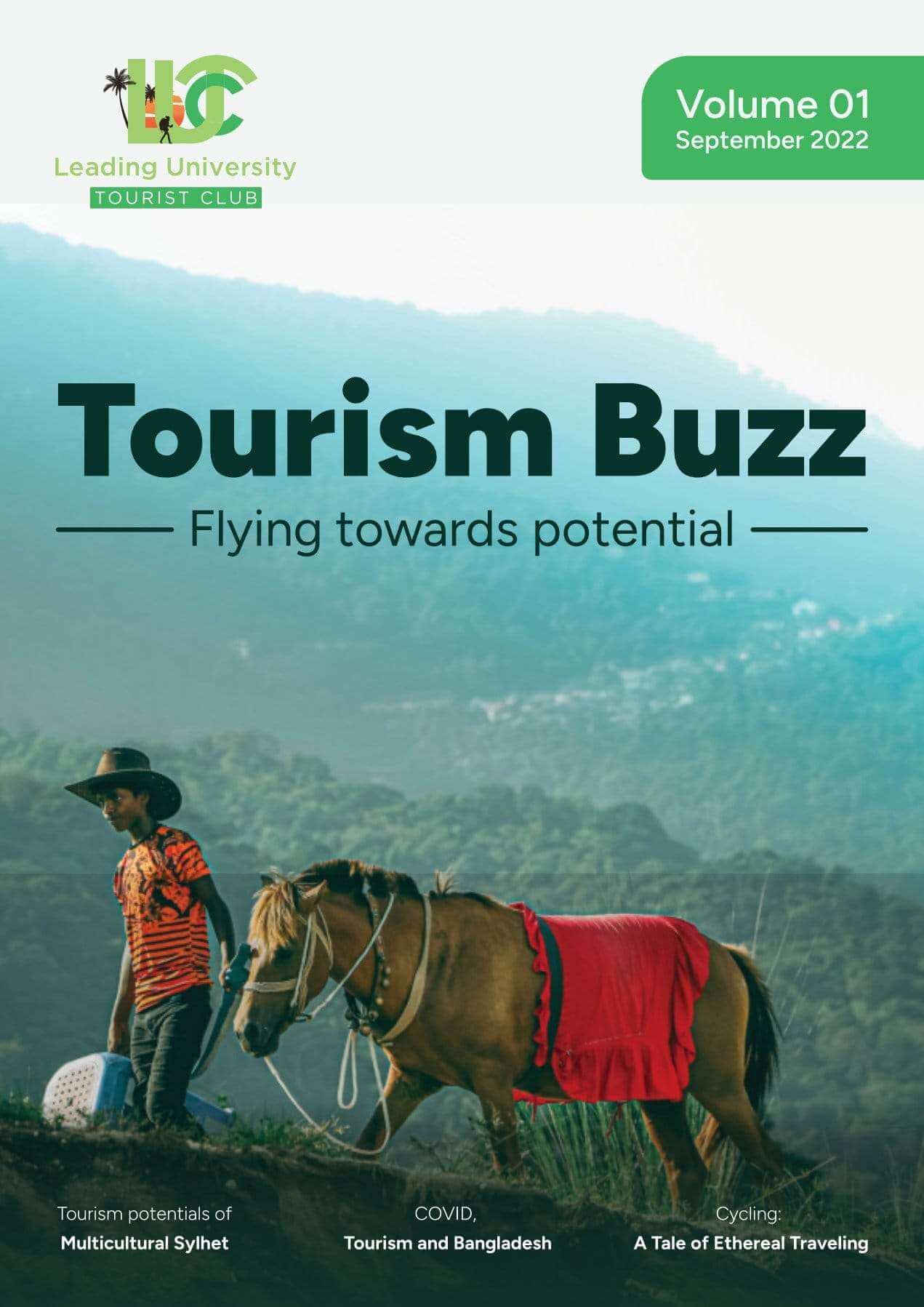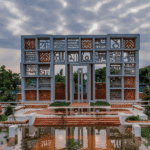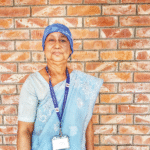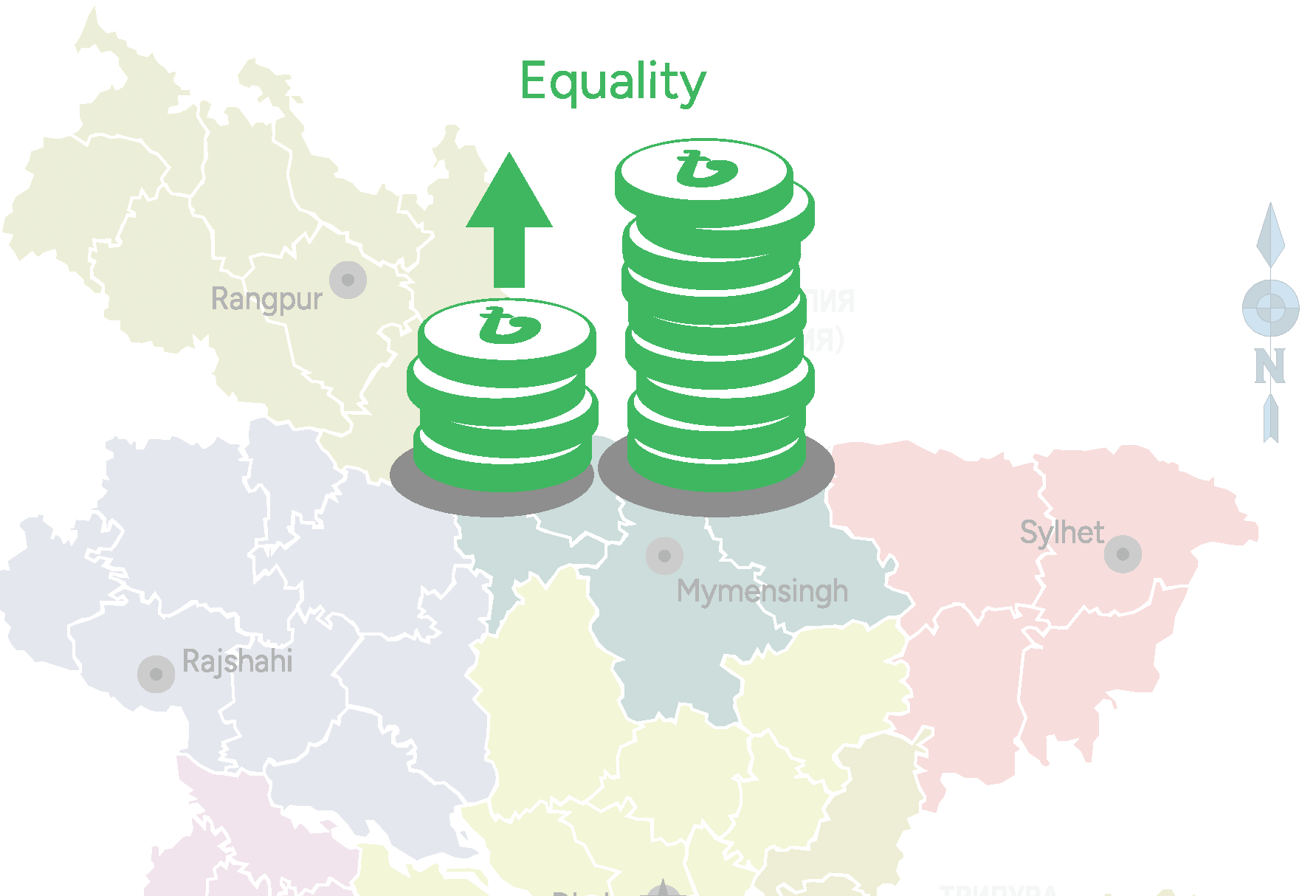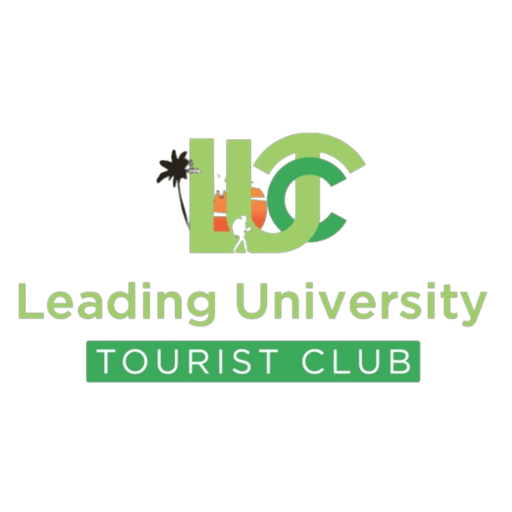Room for enhancement and Promoting the Community
With its unique cultural and geographic diversity, Sylhet has a special appeal for tourism in Bangladesh. This distinctive status draws around 40% of in-country tourism. Expats living in the country and non-resident Bangladeshis visit Sylhet, often multiple times. The limited numbers of foreign tourists who visit this country also find this region of special interest.
As the world celebrates, ‘Tourism for Inclusive Growth‘, how Sylhet with its unique cultural diversity and physical features can benefit manifold from tourism and play a significant role in promoting inclusive growth may be explored.
On reflecting on what tourists’ desire, it is understood that travelers look for an authentic experience, particularly associated with cultural exposure and environmental features, when seeking new experience and activity primarily for leisure, and enjoyment. Associated with it may be business interests, sports, health care, and personal enhancement such as writing and photography. Sylhet has all the factors to attract people to visit, stay and enjoy.
The activities associated such travel and stay involving cultural exposure can be made sustainable through engaging the community. This may include promotion of local crafts, drama, music, myths, local cuisines, textiles, ethnicity, and heritage conservation, amongst others. As a ripple effect, the local economy may be boosted through the creation of new jobs, induction of new skills, improved services, enhancement of local industries and products and heightening community engagement. Through financial gains, the host community gains access to a better life.
As mentioned, Sylhet has huge potentials to gain the authentic experience that tourist’s desire. Some variables that are commonly used to position a place for tourism are; architecture & design (buildings and structures), celebrity and fame, cuisine, ethnicity, festivals, history, heritage and local products. All these are part of our tangible and intangible cultural heritage.

Architecture & Design: In Sylhet, there is a unique construction technique in the,’ Assam pattern house’ and its derivative, the ‘Bangla Baton’ house. These are built with local materials such as ‘ikor’ (a reed growing locally in the extensive water areas known as the haors and beels), bamboo, wood, and mud-lime plaster. With a variety of sloping roof styles to deal with high rainfall and ensure ventilation and incorporating verandahs, these light-weight structures are responsive to the environmental needs of the region. As part of our tangible cultural heritage the Bangla baton house is of great interest to locals and foreigners, particularly to designers.
Celebrity and Fame: Sylhet is endowed with numerous celebrities; in literature, music and politics. Some of whom are; Syed Muztaba Ali, a renowned writer, journalist, travel enthusiast, academic, scholar and linguist. Full of humor and insight, his books are well read and have been translated into multiple languages. Leela Nag, a radical politician and social reformer and the first female student to contest for admission into, a then all male Dhaka University. She took active part in the Independence movement. In the social sphere she played a significant part in promoting female education and life skills. Sylhet is endowed with a number of famous folk musicians. Amongst them are Radha Raman Datta who wrote and composed over 3,000 in the ‘baul’, tradition, and was the creator of Dhamial art form, songs and traditional dances. His songs have revived and have become very popular. Hason Raja and is a famous mystic poet of Sylhet. Shah Abdul Karim, is another famous baul icon of Bangladesh, who passed away recently. The messages they tried to convey through their lifelong dedication can be a great resource for promotion of tourism. Sylhet has been gifted with visits by many famous personalities; one of them is the noble laureate Rabindranath Tagore. They are all part of our intangible cultural heritage. There abodes can be transformed to heritage homes with annual events being held in a befitting manner.
Culture and Crafts: Sylhet has its own written script known as the Sylhet Nagri, which was historically used in the Sylhet region and Assam. Now gone into obscurity, interest in its revival and research has found new ground. Sylheti literature also exists in the Nagri language. This could alos be a source of tourism.
To preserve the folk literature, music, history and produce of Sylhet and create public awareness of its rich cultural legacy a number of small museums have been established primarily by family and local efforts. Some of which are the Hason Raja Museum, the Osmani museum, the Muslim Shahittaya Kendro Museum and the Tea Museum in Sreemangal. These are all of varied interests to a diverse group of visitors.
Not many years ago theatres were scheduled in a number of venues, the Saroda Hall being one of them. Now the Nazrul auditorium and open plaza is venue for some cultural events. Using modern technology for propagating ads in advance and the opportunity to purchase tickets, events here and in other interesting venues can reach a wider audience. The events can support sales of additional products and facilities.
Sports, particularly cricket has become a favorite to young and old. The recently completed international cricket stadium has created opportunity for international matches drawing large crowds beyond the Sylhet region.
Cuisine: Tourists take great pleasure in dining out and trying local cuisines and delicacies. Sylhet is fortunate to have a list of main dishes and savories unique to this region. Some of these are: Akhni which is a mixed rice dish, cooked with traditional spices. Beef Hatkhora is another distinctive Sylheti cuisine comprising of beef cooked with satkara (a type of citrus grown only in the Sylhet region) giving it a particular flavor and taste. The ‘Hash Bash’ (duck bamboo) is a curry made of duck and bamboo shoots. Due to the existence of large water bodies, Sylhet is gifted with a variety of fish from natural sources which are appreciated over farmed fish. Cooked, fresh or dried (shutki), these are a source of joy for many travellers. Locally called Khatta or Tenga, Sylheti households often have a soupy dish with fish and tangy vegetables to soothe them in the hot months. Thoikor Tenga is one such dish, prepared with the uncommon seedless vegetable with citrus flavor. These may be advertised in multiple ways to seek visitor interest.
Amongst the savory items are: Guror Handesh which is a sweet and puffy pitha (rice flour cake) with molasses, Chunga pitha a traditional pitha, with glutinous (sticky) rice stuffed inside a particular type of bamboo and smoked slowly. Tusha Shinni, a type of flour halwa, a popular desert. These are all items of interest.
Being the largest tea growing region of Bangladesh, Sylhet has a variety of fresh teas. A tourist attraction is the Seven-colour tea having multiple layers of different colours. It is tactic created by a local tea worker turned entrepreneur – Romesh Ram Gour who noticed that different tea leaves have different densities and each layer can display a different colour and different tastes can be given, ranging from syrupy sweet to spicy clove. The small stalls that has been opened for tourists has created great tourist interest.
Ethnicity People And Their Crafts: The ethnic communities in Sylhet like elsewhere, are strikingly diverse in their culture, religion and patterns of social living. They have enriched our cultural heritage by their exotic traditions, literature, languages, arts, and crafts. The main ethnic groups in Sylhet are the Khasi, Manipuri, Patro or Laleng, Bishnupriya and Tripura. The Manipuri and the Khasi are the largest in numbers and in tourism interests. The tea garden workers who were brought here from the eastern parts of mainland India are of numerous castes. They have their own language and cultural practices. Their crafts consist of cane and bamboo household and decorative items.
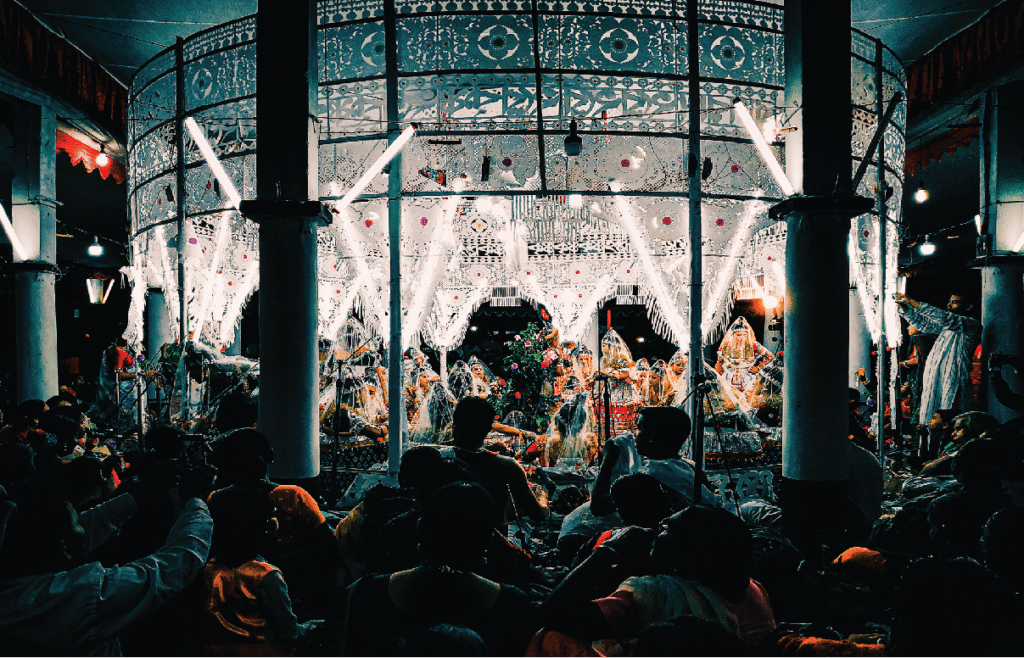
Festivals: The Manipuri dance style imbued with devotional themes of Radha – Krishna originating in Manipur India, is now famous throughout the world for its graceful movements and expressive gestures. It is considered a purely spiritual experience. The Rash Mela (festival) during the full Autumn moon, is of special mention. The colorful and ornate dress and jewellery they wear are striking. This can be transformed into a huge gathering of national and international visitors.
The various communities in the tea estates have their Spring festivals where they dance and sing in their own tradition. Amongst the locals the annual Boat Race in the Surma river is an exciting event. The ‘Polo Bawa Festival” – occurs in certain areas in winter when the natural water bodies dry up. In this over 200 year tradition all the village folk set out to catch fish with specially made basketry items and poles. It is quite a fascinating event. A fish mela in the Kazir Bazaar fish market in the city and one in the outskirts are held annually where a variety of exotic and very large sized fishes are displayed for sales. Locals and visitors throng the bazaars to witness the catches even when the products are not within their buying capacity. If organized formally with discipline and aesthetics in mind these can be big tourism attraction.
History and Heritage: Sylhet has been subjected to historical vicissitudes. From ancient times the region was a commercial center ruled by Brahman kingdoms – petty and large. Many myths are associated to their rule that relate to specific incidents and areas of Sylhet.
Due to the strategic location, pristine environment and commercial interests desire to either rule or preach religion always occurred in the region. The emergence of Islam through Hazrat Shah Jalal , the defeat of Raja Gour Govinda, are significant historic milestones. The birth of Chaitanya, who is believed to be the reincarnation of Krishna has his ancestral home is Sylhet. A Persian nobleman settled in a rural village in South Sylhet. Mughal governors, Sultans of Delhi and Bengal took control of specific areas. It came under the British rule, was made part of the Assam Constituency and then again part of Eastern Bengal and then again a part of East Pakistan through a referendum and finally the administrative division of Bangladesh.
With the passage of centuries and political changes, the kingdoms or the personalities no longer exist but as part of our history and heritage the consequences or influence of their presence remains. inter alia, in sites, edifices, beliefs, institutions, events, lifestyle , all of which are of tourism interest and can be enhanced and made inclusive.
One such site is the Jainta Rajbari which was the abode of the rulers of this ancient kingdom. The ruins include the royal place, a watch tower, ornamental gateway, mandir, monolithic structures, wells and large dighis, the Jaintaswari Front Wall etc. Some of the legacy from the British era is the now abandoned Sylhet jail which had been witness to many events, the Keane bridge making the much needed connection over the Surma River between the north and south regions. The establishment of Murari Chand College, the first tea garden in Mulnicherra, and emergence of Sylhet as the centre of tea cultivation and export is also significant.
Multiple Faiths: Religious tourism has a prominent place in tourism of the region. Devotees flock to the dorga (mausoleum) complex of the patron saint of Sylhet – Hazrat Shah Jalal. The annual urs (death anniversary) is a huge festival with visitors, from all over the country and beyond.
The open prayer space and large plaza of the Shahi Eid Gah is an important landmark from the past still in use and a popular tourist spot. It is recorded that Mohandas Gandhi and Muhammad Ali Jinnah gave speeches from the location. Important edifices from other faiths such as the churches at Nayasharok and Kamalganj, the missions of Ram Krishna, the Bithanol Akhra at Habiganj are noteworthy due to their history and events / festivals that are held.
As we list but a fraction of what is significant as the cultural heritage of Sylhet region, it is vital to see how Sylhet can benefit further from tourism potentials that they offer and how the host communities, the region and the country and benefit.
It is evident that Sylhet has numerous diverse cultural elements to attract tourism. However, presently tourism is largely limited to visit to the unique ecological sites, such as the haors in Sunamganj, tea plantations in Srimangal, Habiganj and Sylhet, the Ratargul swamp forest, the bordering areas and its foothills with stone beds, sandy stretches, waterfalls in Jaflong and Companyganj etc. Religious tourism is also high on the agenda. However, just as when, all the best ingredients for a great dish is available, but the best recipe is absent, and the presentation is poor, the ingredients will fail to make a great meal. Similarly, even when Sylhet has all the ingredients for tourist interest, they will not be attracted if the ingredients are not managed, maintained and presented in an attractive package.
A whole set of creative thinking and management activities must be in place to fully take advantage of the tourism potentials that exist in Sylhet. Advertising and documentation in multiple forms is of prime importance. It is said that ‘A city faces a real challenge when people outside of it do not know the potentials of a PLACE.’ Fostering a positive image and stimulate pride in the city, needs attention.
A place cannot be attractive when management of the sites are poor or missing, when the place and surroundings are littered with packets, wrappers, bottles, plastics and piled food waste. Protecting the existing vegetation and enhancing it is important. Having affordable, sufficient and safe transport rentals is essential but not enough, if drop-off, parking, access to the site, adequate signposting and ticketing, is not managed meticulously. None of our sites have well designed, ’Tourist information center/desk with a lounge, toilets, ticketing counters, brochures, posters, booklets. Rentals of umbrellas, straw / bamboo hats, walking sticks, wheel chairs can be desirable. Additionally tea cafés, souvenir shops, are facilities that tourists seek. Overall aesthetics of a place and ease of movement is important. For this is required signposting, landscaped courts and plazas, in essence an aesthetically pleasant environment as, ‘A thing of beauty is a joy forever’.
Unfortunately, destruction of the unique environment of Sylhet goes unabated. This must be stopped if we are to be on top of the tourism map. Stone quarrying and crushing in the most chaotic manner goes unabated, On the other hand, across the Tamabil border of Bangladesh, in Shonnangpedeng, Dawki, stone quarrying is not allowed, and tourism is expanding, involving the local community.
A very effective approach to engage the community that is commonly used in small and remote settlements, is the ‘Home Stay’ option. This can be considered in say, the Bithanol Akhra in Habiganj, the Manipuri settlements in Kamolganj, or the Khasi settlements in Shonggram Punji, Jaflong. Local administration and the banking system may help the local community to upgrade or build a room or two with a modern toilet facility, within their homestead where tourists can spend the night and have meals with the family. The administration and community can ensure safety. Parking arrangements in such location can be facilitated by locals. This approach has become very popular in many countries in Asia including our neighboring country. In the Khasi settlement at Mawlalong Meghalaya, most houses have an extended deck or a room turned into a cafe to serve tea, snacks and display/sell souvenirs. Through community work, the village has been kept clean, neat and orderly thereby receiving the ‘Cleanest Village Award’. Advertisement of this achievement attracts more visitors!
Sylhet can also concentrate on, ‘Activity Oriented’ tourism, to add to its cultural tour programs. For instance, trekking or cycling through the hills and natural forests, tea plantations or rural areas can be introduced, as both these activity are gaining popularity. Trekking and cycle tourism is big in Nepal, Vietnam, and Cambodia amongst other destinations.
With government patronage and community involvement, all of these functions can easily be managed to satisfy visitors, thereby increasing tourism revenues, new employments and new ventures. Short term training programs for youths to act as guides to historical sites / buildings and other areas, can be designed and provided. This can make a positive change to the tourism sector. For instance, being guided through the Janita kingdom, or a museum or the central jail with countess tales and humour being narrated can make a visit much more enjoyable. In the, Sacred Forest in neighbouring Meghalaya; the community has formed a local body of guides for all visitors. With interesting myths and stories they make sure that the pristine environment is not destroyed and nothing is removed from the area while trekking through the forest. The community generates income, protects the forest and pleases the tourists. It is a ,’win –win’ situation for all!
There are endless methods to engage the community and enhance tourism. For examples, besides the tribal textiles and basketry, marketing of Sylheti produce and snacks in attractive packaging can be in demand. Not all visitors have time to visit bazaars. A shatkore or two, on a small bamboo tray or basket wrapped with transparent sheets, tied with colored ribbons and sold in stalls in airport exit lounges can be of demand. Pithas, halwas, munchies made with chira / muri (flattened / puffed rice) with attractive special packaging has been proven to be popular in many countries such as ours.
The homes of the many talents that Sylhet is proud of could be a significant contributor to inclusive tourism through preserving their homes and transforming them into interesting places to visit by attaching eateries with local cuisines, cafes, craft and book shops. Craft shops could include rag dolls and paintings, expressing the theme of the folk songs and popular myths.
As the international day of tourism is celebrated this year it is hoped that all the national and local administrative organizations, the tourism department, entrepreneurs and local residents take extra interests to explore all the potentials Sylhet has for increased tourism interests and in phases, formulate the planning and urban design strategies to implement ideas, implement and manage them, to benefit all.

